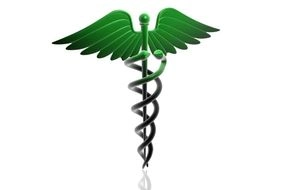
Introduction to Escitalopram and Its Uses
Escitalopram, commonly known by its brand name Lexapro, is a selective serotonin reuptake inhibitor (SSRI) frequently prescribed to treat depression and generalized anxiety disorder. Its primary function is to restore the balance of serotonin in the brain, which helps to improve mood and reduce anxiety. While escitalopram is effective for many, its use during pregnancy raises important concerns regarding the safety and well-being of both the mother and the developing fetus.
Risks of Escitalopram During Pregnancy
When considering the use of escitalopram during pregnancy, it is crucial to weigh the potential risks against the benefits. Research has shown that the use of SSRIs in pregnancy can be associated with several complications. For instance, studies suggest a possible link between SSRIs and an increased risk of birth defects, particularly heart defects, when taken during the first trimester. However, these findings are not conclusive, and the actual risk increase is considered to be very low.
Moreover, the discontinuation of antidepressants during pregnancy is associated with a high risk of relapse of depression in the mother, which itself poses significant risks to both maternal and fetal health. Depression during pregnancy can lead to poor nutrition, smoking, and alcohol use, and less consistent prenatal care. It can also result in premature birth, low birth weight, and developmental problems.
Neonatal Adaptation Syndrome
Another concern is the potential for neonatal adaptation syndrome (NAS) in newborns exposed to SSRIs in late pregnancy. NAS can manifest as respiratory distress, feeding difficulties, irritability, and jitteriness in the newborn. While typically mild and self-limiting, these symptoms require close monitoring and sometimes intervention in the neonatal period.
Balancing Treatment and Risks
The decision to use escitalopram during pregnancy should always be made collaboratively between a woman and her healthcare provider, ideally before conception. This collaboration allows for a thorough review of the woman's mental health history, the severity of her symptoms, and her response to medication. In some cases, the benefits of continuing escitalopram may outweigh the potential risks, especially if the mother’s depression is severe.
Alternative Therapies and Strategies
For those concerned about the use of escitalopram during pregnancy, there are several alternatives and strategies that can be considered. Psychotherapy, such as cognitive-behavioral therapy (CBT), has been shown to be effective for treating depression and anxiety during pregnancy without the use of medication. Additionally, lifestyle modifications, including regular exercise, adequate sleep, and a nutritious diet, can also help manage mild to moderate symptoms.
Conclusion
The use of escitalopram during pregnancy requires careful consideration and personalized medical advice. It is vital for healthcare providers to stay informed about the latest research and guidelines to help expectant mothers make informed decisions about their mental health treatment. By weighing the potential risks and benefits and considering alternative treatments, healthcare providers and patients can work together to ensure the health and safety of both the mother and her developing baby.
Contact Us Today For A Free Consultation

- Exploring the Effects of Escitalopram on Weight in American Males: A Comprehensive Review [Last Updated On: February 17th, 2025] [Originally Added On: February 17th, 2025]
- Escitalopram: Effective OCD Treatment for American Males, Enhanced by Psychotherapy [Last Updated On: February 21st, 2025] [Originally Added On: February 21st, 2025]
- Exploring the Impact of Escitalopram on Panic Disorders in American Males [Last Updated On: February 26th, 2025] [Originally Added On: February 26th, 2025]
- Introduction to Escitalopram [Last Updated On: March 2nd, 2025] [Originally Added On: March 2nd, 2025]
- Exploring the Cognitive Effects of Escitalopram: Beyond Mood and Anxiety Treatment in Major Depressive and Generalized Anxiety Disorders [Last Updated On: March 3rd, 2025] [Originally Added On: March 3rd, 2025]
- Exploring Escitalopram: Efficacy and Side Effects in Treating Male Depression and Anxiety [Last Updated On: March 5th, 2025] [Originally Added On: March 5th, 2025]
- Escitalopram's Role in Treating Depression and Anxiety in Adolescent American Males [Last Updated On: March 6th, 2025] [Originally Added On: March 6th, 2025]
- Understanding Escitalopram: Chemical Structure, Mechanism, and Clinical Efficacy Explained for Mental Health [Last Updated On: March 7th, 2025] [Originally Added On: March 7th, 2025]
- Safely Withdrawing from Escitalopram: A Guide for American Men Under Medical Supervision [Last Updated On: March 8th, 2025] [Originally Added On: March 8th, 2025]
- Escitalopram vs. Other Antidepressants: A Guide for American Males on Mental Health Treatment [Last Updated On: March 9th, 2025] [Originally Added On: March 9th, 2025]
- Exploring Escitalopram Interactions: A Guide for American Males on Medications to Avoid [Last Updated On: March 12th, 2025] [Originally Added On: March 12th, 2025]
- Exploring the Impact of Escitalopram in Mental Health Care for American Men [Last Updated On: March 13th, 2025] [Originally Added On: March 13th, 2025]
- Exploring the Safety of Escitalopram Use in Elderly American Males: Essential Precautions [Last Updated On: March 15th, 2025] [Originally Added On: March 15th, 2025]
- Escitalopram Overdose: Symptoms, Actions, and Prevention for American Males [Last Updated On: March 17th, 2025] [Originally Added On: March 17th, 2025]
- Escitalopram's Impact on Sleep in American Males: Effects and Management Strategies [Last Updated On: March 18th, 2025] [Originally Added On: March 18th, 2025]
- Escitalopram: Efficacy, Safety, and Quality of Life Impact in American Males [Last Updated On: March 19th, 2025] [Originally Added On: March 19th, 2025]
- Escitalopram Use in American Males: Monitoring Liver Health and Function [Last Updated On: March 20th, 2025] [Originally Added On: March 20th, 2025]
- Enhancing Escitalopram Adherence in American Males: Strategies and Support [Last Updated On: March 20th, 2025] [Originally Added On: March 20th, 2025]
- Escitalopram's Efficacy in Treating PTSD Among American Males: A Review [Last Updated On: March 20th, 2025] [Originally Added On: March 20th, 2025]
- Escitalopram's Efficacy in American Males: Diverse Case Studies on Depression and Anxiety [Last Updated On: March 20th, 2025] [Originally Added On: March 20th, 2025]
- Escitalopram's Impact on Blood Pressure in American Males: A Clinical Study [Last Updated On: March 21st, 2025] [Originally Added On: March 21st, 2025]
- Escitalopram's Role in Treating Social Anxiety Disorder in American Males: Efficacy and Safety [Last Updated On: March 21st, 2025] [Originally Added On: March 21st, 2025]
- Escitalopram Pharmacokinetics: Essential Insights for American Male Clinicians [Last Updated On: March 22nd, 2025] [Originally Added On: March 22nd, 2025]
- Escitalopram's Efficacy in Treating Body Dysmorphic Disorder in American Males [Last Updated On: March 22nd, 2025] [Originally Added On: March 22nd, 2025]
- Escitalopram: From Lab to Pharmacy, Aiding American Males' Mental Health [Last Updated On: March 22nd, 2025] [Originally Added On: March 22nd, 2025]
- Escitalopram Experiences: American Men's Journey with Depression and Anxiety Treatment [Last Updated On: March 22nd, 2025] [Originally Added On: March 22nd, 2025]
- CBT and Escitalopram: A Synergistic Approach to Mental Health for American Males [Last Updated On: March 23rd, 2025] [Originally Added On: March 23rd, 2025]
- Escitalopram: Effective MDD Treatment for American Men's Mental Health [Last Updated On: March 23rd, 2025] [Originally Added On: March 23rd, 2025]
- American Man's Journey with Escitalopram in Battling Depression [Last Updated On: March 23rd, 2025] [Originally Added On: March 23rd, 2025]
- Managing Escitalopram's Sexual Side Effects: Strategies for American Men [Last Updated On: March 23rd, 2025] [Originally Added On: March 23rd, 2025]
- Switching from Fluoxetine to Escitalopram: Key Considerations for American Males [Last Updated On: March 23rd, 2025] [Originally Added On: March 23rd, 2025]
- Escitalopram's Role in Managing Menopausal Depression: Insights for American Men [Last Updated On: March 23rd, 2025] [Originally Added On: March 23rd, 2025]
- Escitalopram's Role in Treating Major Depressive Disorder Across All Phases [Last Updated On: March 24th, 2025] [Originally Added On: March 24th, 2025]
- Escitalopram's Future in Psychiatric Care for American Males: Advancements and Challenges [Last Updated On: March 24th, 2025] [Originally Added On: March 24th, 2025]
- Escitalopram's Pharmacodynamics: Benefits for American Males with Depression and Anxiety [Last Updated On: March 24th, 2025] [Originally Added On: March 24th, 2025]
- Escitalopram in Geriatric Psychiatry: Efficacy, Safety, and Considerations for Older American Males [Last Updated On: March 24th, 2025] [Originally Added On: March 24th, 2025]
- Escitalopram in Pediatric Males: Safety, Monitoring, and Educational Guidelines [Last Updated On: March 25th, 2025] [Originally Added On: March 25th, 2025]
- Escitalopram: Effective GAD Treatment for American Males - Dosage, Efficacy, and Management [Last Updated On: March 25th, 2025] [Originally Added On: March 25th, 2025]
- Escitalopram's Efficacy in Treating Post-Stroke Depression Among American Males [Last Updated On: March 25th, 2025] [Originally Added On: March 25th, 2025]
- Escitalopram's Long-Term Use in American Males: Benefits, Risks, and Management Strategies [Last Updated On: March 25th, 2025] [Originally Added On: March 25th, 2025]
- Escitalopram Safety in American Males with Liver Disease: Dose Adjustments and Monitoring [Last Updated On: March 25th, 2025] [Originally Added On: March 25th, 2025]
- Escitalopram: Key Insights for Treating Depression and Anxiety in American Males [Last Updated On: March 25th, 2025] [Originally Added On: March 25th, 2025]
- Escitalopram's Impact on Anxiety in American Men: Efficacy, Dosage, and Cultural Insights [Last Updated On: March 26th, 2025] [Originally Added On: March 26th, 2025]
- Escitalopram's Efficacy and Safety in Managing Bipolar Disorder in American Males [Last Updated On: March 26th, 2025] [Originally Added On: March 26th, 2025]
- Escitalopram: Effective SSRI for Depression and Anxiety in American Men [Last Updated On: March 26th, 2025] [Originally Added On: March 26th, 2025]
- Escitalopram Use and Drug Interactions: A Guide for American Males [Last Updated On: March 26th, 2025] [Originally Added On: March 26th, 2025]
- Escitalopram: A Beacon of Hope for American Men with Seasonal Affective Disorder [Last Updated On: March 26th, 2025] [Originally Added On: March 26th, 2025]
- Escitalopram and Serotonin Syndrome: Risks and Management in American Males [Last Updated On: March 26th, 2025] [Originally Added On: March 26th, 2025]
- Escitalopram: Understanding Its Role in Treating Mood Disorders in American Men [Last Updated On: March 26th, 2025] [Originally Added On: March 26th, 2025]
- Escitalopram Enhances Quality of Life in Palliative Care for American Males [Last Updated On: March 26th, 2025] [Originally Added On: March 26th, 2025]
- Escitalopram: Enhancing Cognitive Function and Mental Health in American Males [Last Updated On: March 26th, 2025] [Originally Added On: March 26th, 2025]
- Escitalopram's Efficacy in Treating Chronic Depression Among American Males [Last Updated On: March 27th, 2025] [Originally Added On: March 27th, 2025]
- Escitalopram's Efficacy in Managing BPD Symptoms in American Males: A Pilot Study [Last Updated On: March 27th, 2025] [Originally Added On: March 27th, 2025]
- Escitalopram-Induced Mania in American Males: Risks, Cases, and Management Strategies [Last Updated On: March 27th, 2025] [Originally Added On: March 27th, 2025]
- Escitalopram and Alcohol Risks for American Males: Health Impacts and Safety Guidelines [Last Updated On: March 27th, 2025] [Originally Added On: March 27th, 2025]
- Escitalopram's Impact on Physical Health in American Males: Benefits and Risks [Last Updated On: March 27th, 2025] [Originally Added On: March 27th, 2025]
- Escitalopram: Enhancing Mental Health in American Males - Efficacy and Holistic Care [Last Updated On: March 27th, 2025] [Originally Added On: March 27th, 2025]
- Escitalopram's Impact on Cognitive Skills in American Males: A Comprehensive Review [Last Updated On: March 27th, 2025] [Originally Added On: March 27th, 2025]
- Escitalopram Interactions with Antidepressants: Insights for American Males [Last Updated On: March 28th, 2025] [Originally Added On: March 28th, 2025]
- Escitalopram: A Promising Treatment for Neuropathic Pain in American Males [Last Updated On: March 29th, 2025] [Originally Added On: March 29th, 2025]
- Escitalopram's Efficacy and Safety for Depression in American Male Adolescents [Last Updated On: March 29th, 2025] [Originally Added On: March 29th, 2025]
- Escitalopram's Efficacy in Treating Agoraphobia Among American Males: A Review [Last Updated On: March 30th, 2025] [Originally Added On: March 30th, 2025]
- Escitalopram's Cardiovascular Effects in American Males: A Comprehensive Analysis [Last Updated On: March 31st, 2025] [Originally Added On: March 31st, 2025]
- Escitalopram's Role in Treating Eating Disorders Among American Males [Last Updated On: March 31st, 2025] [Originally Added On: March 31st, 2025]
- Escitalopram's Impact on Autonomic Nervous System in American Males: Cardiovascular Health Insights [Last Updated On: April 2nd, 2025] [Originally Added On: April 2nd, 2025]
- Escitalopram: Effective PMDD Treatment and Its Impact on American Males [Last Updated On: April 2nd, 2025] [Originally Added On: April 2nd, 2025]
- Optimizing Escitalopram Dose Titration for American Males: A Medical Perspective [Last Updated On: April 3rd, 2025] [Originally Added On: April 3rd, 2025]
- Escitalopram's Role in Treating Dysthymia Among American Males: Efficacy and Management [Last Updated On: April 3rd, 2025] [Originally Added On: April 3rd, 2025]
- Escitalopram's Potential in Treating Postpartum Depression in American Men: Efficacy and Impact [Last Updated On: April 5th, 2025] [Originally Added On: April 5th, 2025]
- Escitalopram Enhances Quality of Life in American Men with Depression: A Systematic Review [Last Updated On: April 6th, 2025] [Originally Added On: April 6th, 2025]
- Escitalopram and Suicide Risk in Adolescent Males: A Comprehensive Analysis [Last Updated On: April 8th, 2025] [Originally Added On: April 8th, 2025]
- Transitioning from Citalopram to Escitalopram: A Guide for American Men [Last Updated On: April 8th, 2025] [Originally Added On: April 8th, 2025]
- Escitalopram Side Effects Management for American Males: A Comprehensive Guide [Last Updated On: April 9th, 2025] [Originally Added On: April 9th, 2025]
- Effective Strategies for American Men to Manage Escitalopram Withdrawal [Last Updated On: April 9th, 2025] [Originally Added On: April 9th, 2025]
- Escitalopram and Psychotherapy: Enhancing Mental Health in American Men [Last Updated On: April 10th, 2025] [Originally Added On: April 10th, 2025]
- Escitalopram: Benefits and Considerations for American Males with Psychiatric Disorders [Last Updated On: April 11th, 2025] [Originally Added On: April 11th, 2025]
- Genetic Factors Influencing Escitalopram Efficacy in American Males: A Pharmacogenomics Insight [Last Updated On: April 12th, 2025] [Originally Added On: April 12th, 2025]
- Escitalopram: Enhancing Mental Health in American Men [Last Updated On: April 12th, 2025] [Originally Added On: April 12th, 2025]
- Escitalopram's Role in Treating Body Image Disorders in American Males [Last Updated On: April 13th, 2025] [Originally Added On: April 13th, 2025]
- Escitalopram and Diabetes Management in American Males: A Comprehensive Guide [Last Updated On: April 14th, 2025] [Originally Added On: April 14th, 2025]
Word Count: 483




















